Peonies "Cora Louise": description of the variety and features of its cultivation
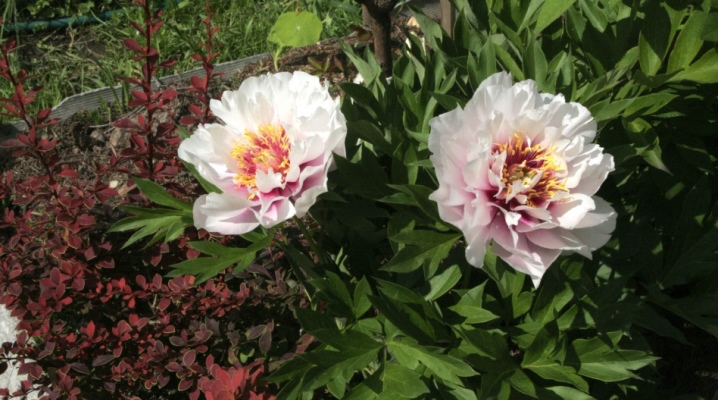
In the centuries-old history of peony cultivation, a new group of hybrid plants has recently appeared. The varieties obtained by crossing tree and herbaceous peonies formed the group of Ito hybrids. Peony "Cora Louise" can be called one of the brightest representatives of the new generation.
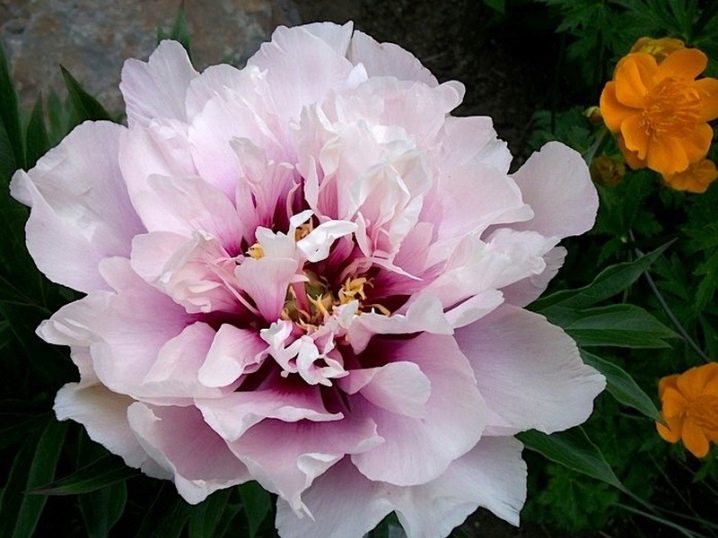
Description of the variety
Ito hybrids have taken the best features of the mother plants. From the ancestors of hybrids on the maternal side, they passed on the features of herbaceous peonies, such as the death of the aerial part of the plant, which facilitates wintering, and the flowering of annual shoots. From the parent plant, the Ito hybrid took on the shape of a bush, leaves, flowers, color features and lignification of roots.
The first varieties of Ito hybrids were obtained in an attempt to create a new plant with yellow flowers, which happened in the second half of the last century. Today, among the Ito or intersectional hybrids, there are not only varieties of yellow color, but there are also other colors characteristic of peonies.

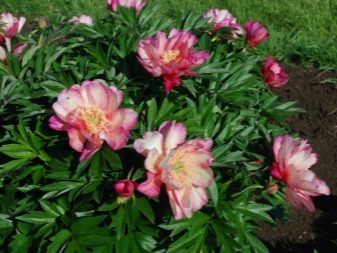
Peony "Cora Louise" can rightfully be called the "king of the garden". A strong, spreading bush about a meter high, with dark green carved foliage and strong stems that can withstand the weight of the flower without additional support, begins its flowering from mid-June. At this time, the plant is covered with large, more than 200 mm in diameter, fragrant semi-double flowers. Pale pink, turning into white, petals with a bright burgundy-purple spot at the base, surround a crown of yellow stamens, which can be seen from a decent distance. Among the Ito-peonies, Cora Louise is one of the few that has almost white petals.

The bush develops quickly, tolerates winters well, does not require special care, and can be divided every 4-5 years.
Agrotechnics
For all its unpretentiousness, Ito-hybrids of peonies need care no less than others. Almost any neutral or slightly acidic soils are suitable for growing them, peonies grow especially well on loam. If the soil where the flower will be placed is heavy, clayey, then it is diluted with sand. On the contrary, clay is added to too light sandy soil.
"Cora Louise" prefers well-lit places, but on a bright sunny afternoon, it is better to shade the plant in order to avoid burning out the petals, the color of which, as the bud opens, changes from pale pink to almost white.

Peony bushes are watered abundantly, but not flooding the plant. Since the Ito hybrids do not have the root system as deep as the herbaceous ones, they do not need to be too diligently watered. The plant calmly withstands even a slight drought, experiencing an increased need for moisture only during the flowering period and the buds of resumption of growth.
Peonies are fed in the spring, with the beginning of growth, then at the time of bud formation, and the next feeding is carried out a couple of weeks after the end of flowering. To obtain nutrients by the plant, a complex mineral fertilizer is used, spraying the leaves and scattering around the bush. When the peony has faded, it is watered with a superphosphate solution.
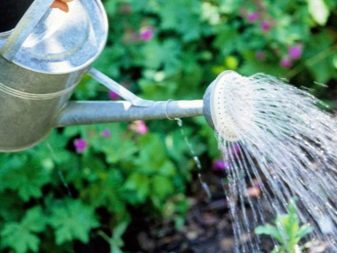

The necessary loosening and weeding is carried out throughout the growing season, and with the onset of autumn, the soil around the bush is mulched with peat or compost, which will allow the plant to receive organic fertilizers from early spring.
Cora Louise, like other Ito-peonies, does not require complete removal of the tops in preparation for winter. The stems that have poured in must be cut to a height of 50-100 mm, since new buds are laid on them, ensuring the growth of the bush next year.
In one place, a hybrid can grow for more than 10 years, so it does not need frequent transplantation, however, this may be required if you need to change the exposure of the garden or get several new plants of this variety.

Best of all, peonies tolerate autumn transplantation and division of the bush. To do this, prepare a landing site in advance:
- in late July - early August, a hole is dug with a diameter and depth of about half a meter;
- fill it with a substrate obtained from earth, peat and sand, with the addition of wood ash, leaving about one third of the volume free;
- left alone until the onset of planting operations in late August - early September.
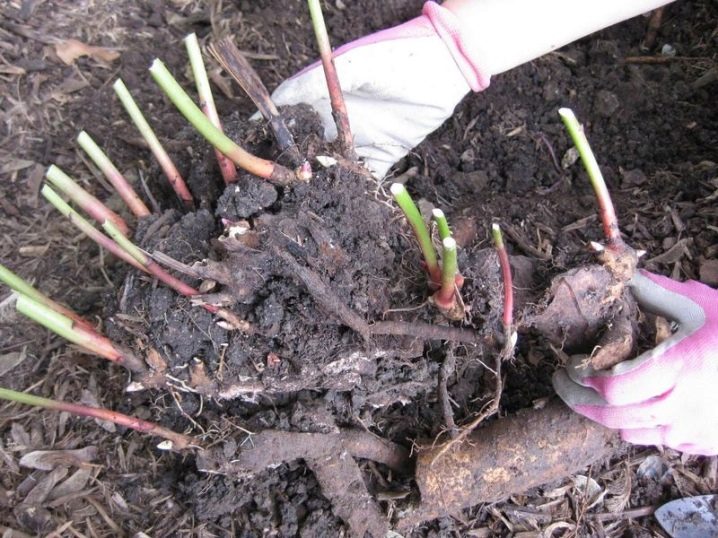
The bush to be transplanted:
- removed from the ground;
- release the root from the ground;
- washed the roots, protecting them from damage;
- dry and examine;
- a wedge is carefully driven into the center of the rhizome so that it breaks up into divisions;
- each part is examined, choosing those where there are 2-3 revival buds and additional roots;
- too long roots are pruned, leaving 10-15 cm in length, and the places of the cuts are sprinkled with crushed coal;
- before planting, the delenki are disinfected in a very weak solution of potassium permanganate and treated with fungicides.
The finished parts of the root are placed in the planting pits, so that the new buds located on the roots go to a depth of no more than 50 mm. The holes are filled up with earth and mulched.

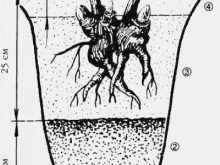
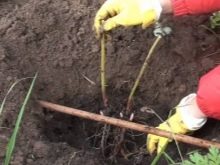
What is being planted next to?
Cora Louise peonies are well suited for use in landscape design and when drawing up bouquets.
A beautiful powerful bush with openwork foliage does not lose its decorative effect until autumn, feeling excellent both in group and single plantings.
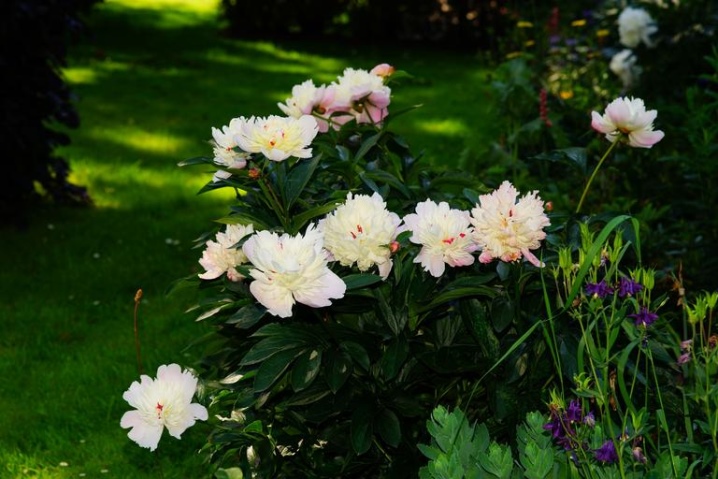
The beauty of a single bush surrounded by low-growing flowers such as white tansy, daisies, dwarf asters, primroses and other species attracts the eye.
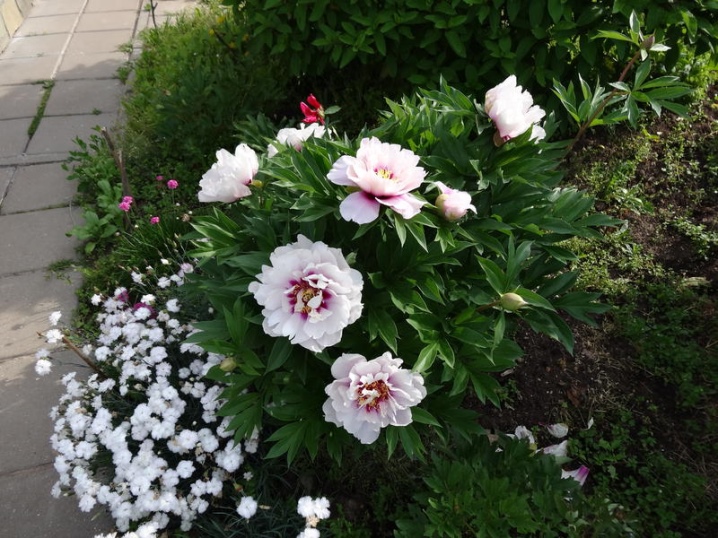
In group plantings, the beauty of the white-pink Cora Louise flowers is remarkably set off by dwarf thujas, junipers or fir trees.
Daylilies and irises will bring their own special sophistication, emphasizing the decorativeness of the carved peony leaf.

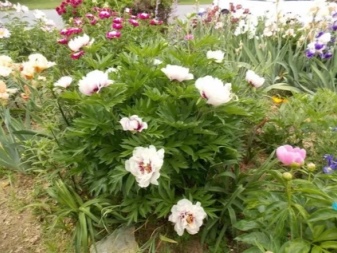
Delphinium, foxglove, purple catnip will add blue-purple spots against the dark greenery of the bush or emphasize the depth of the white-pink hue.
For tips on caring for ito-peonies, see the next video.







































































































The comment was sent successfully.